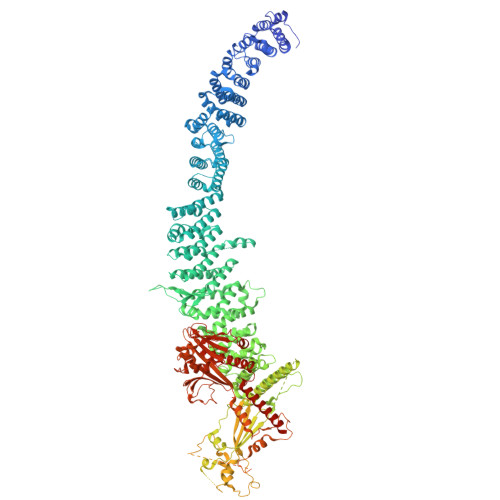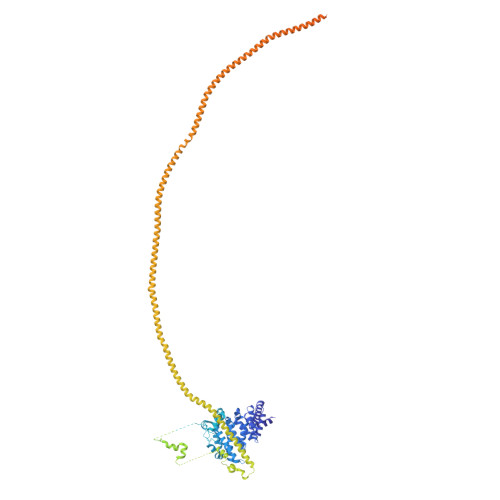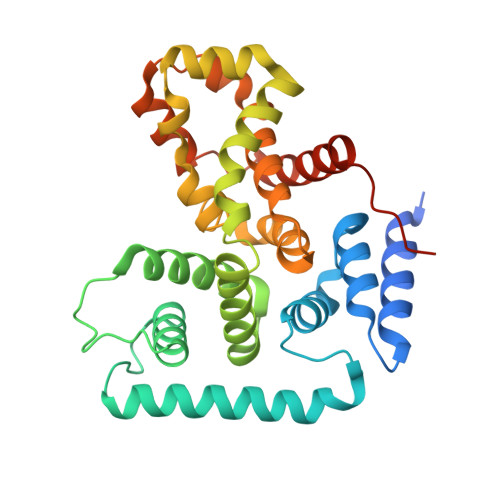Structure of the human TSC:WIPI3 lysosomal recruitment complex.
Bayly-Jones, C., Lupton, C.J., D'Andrea, L., Chang, Y.G., Jones, G.D., Steele, J.R., Venugopal, H., Schittenhelm, R.B., Halls, M.L., Ellisdon, A.M.(2024) Sci Adv 10: eadr5807-eadr5807
- PubMed: 39565846
- DOI: https://doi.org/10.1126/sciadv.adr5807
- Primary Citation of Related Structures:
9C9I, 9CE3 - PubMed Abstract:
Tuberous sclerosis complex (TSC) is targeted to the lysosomal membrane, where it hydrolyzes RAS homolog-mTORC1 binding (RHEB) from its GTP-bound to GDP-bound state, inhibiting mechanistic target of rapamycin complex 1 (mTORC1). Loss-of-function mutations in TSC cause TSC disease, marked by excessive tumor growth. Here, we overcome a high degree of continuous conformational heterogeneity to determine the 2.8-Å cryo-electron microscopy (cryo-EM) structure of the complete human TSC in complex with the lysosomal recruitment factor WD repeat domain phosphoinositide-interacting protein 3 (WIPI3). We discover a previously undetected amino-terminal TSC1 HEAT repeat dimer that clamps onto a single TSC wing and forms a phosphatidylinositol phosphate (PIP)-binding pocket, which specifically binds monophosphorylated PIPs. These structural advances provide a model by which WIPI3 and PIP-signaling networks coordinate to recruit TSC to the lysosomal membrane to inhibit mTORC1. The high-resolution TSC structure reveals previously unrecognized mutational hotspots and uncovers crucial insights into the mechanisms of TSC dysregulation in disease.
- Cancer Program, Biomedicine Discovery Institute, Monash University, Clayton, VIC 3800, Australia.
Organizational Affiliation:




















